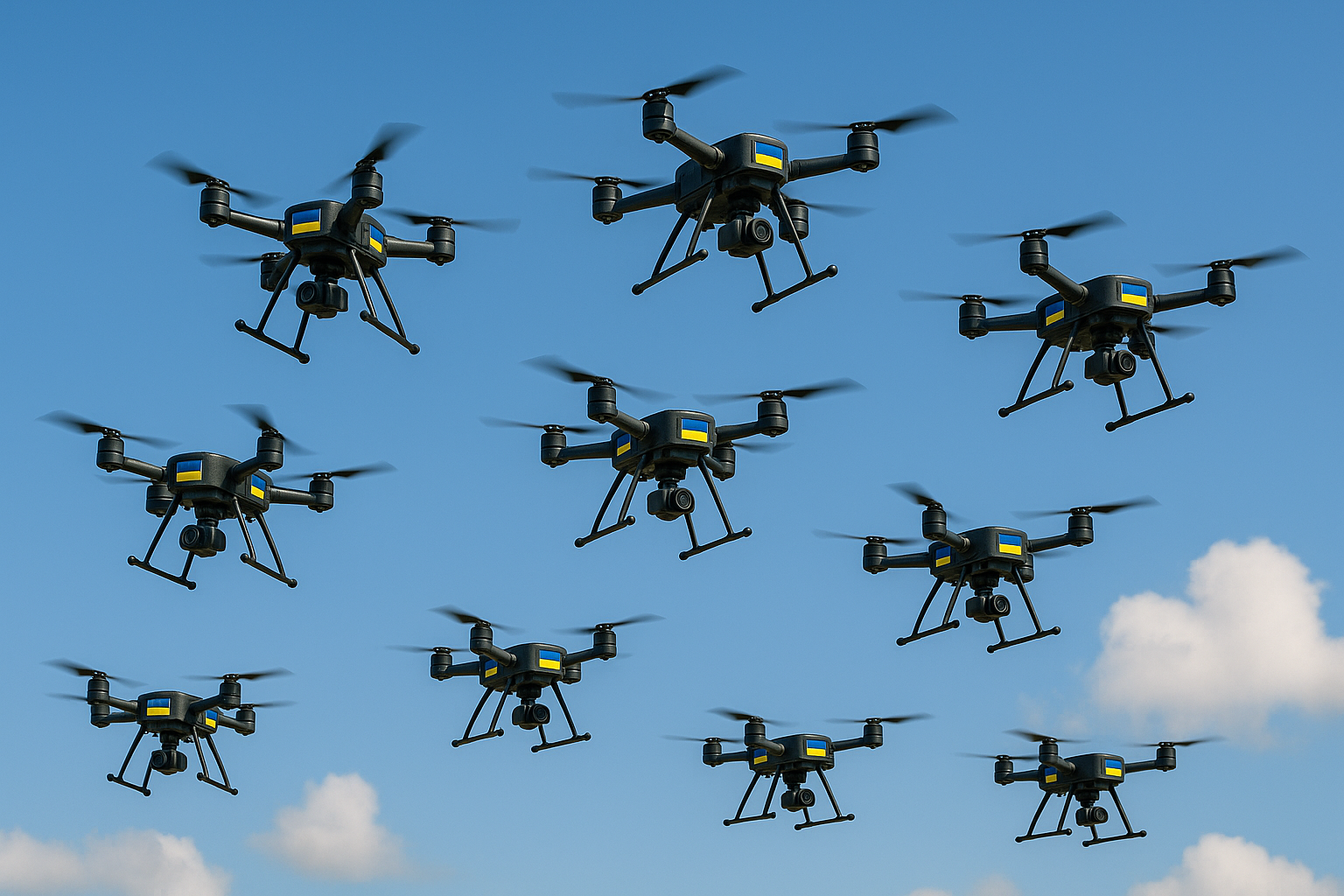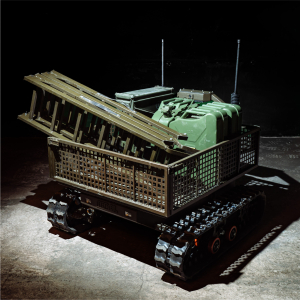What Is a Drone Swarm and How Does It Work?
A drone swarm is not just a large number of UAVs flying in the sky. Its key feature is decentralised interaction between the machines. Each drone in the swarm operates on the basis of a shared algorithm that allows it to navigate, exchange data with its “neighbors,” and make decisions in real time. This enables the swarm to function as a single “organism,” even if some drones are destroyed or lose connection.
The principle behind the swarm mirrors the behavior of natural systems — like flocks of birds or swarms of bees — where coordination emerges not through central control, but through simple local rules of interaction.
A swarm can include drones with different roles: reconnaissance, strike, relay, or electronic warfare. At the heart of the swarm’s effectiveness are artificial intelligence algorithms. They handle task distribution among drones, collision avoidance, route optimization, and adaptation to changing battlefield conditions.
Drone Swarm Development in Ukraine
Ukraine is actively working on technologies for swarm control of unmanned systems and sees this as one of the key directions in the future of warfare. Back in February 2025, Minister of Digital Transformation Mykhailo Fedorov announced plans to deploy “drone swarms.”
One example is the startup Swarmer, which is developing the Styx system. It can unite dozens of drones — both aerial and ground — into a coordinated swarm. In the long run, the system may be able to control up to a hundred units at once. According to the company, Styx is designed for reconnaissance, strike missions, and operations under conditions of electronic warfare.

Other Ukrainian developers are also involved in the development of swarm systems. In the fall of 2024, the Brave1 cluster, along with the Ministry of Defence, the Ministry of Digital Transformation, the General Staff, and the National Guard, conducted demonstration trials of new Ukrainian technologies, including drone swarms and guided munitions. Seventeen development teams took part, with seven presenting their own approaches to swarm technology.
It’s fair to say that elements of artificial intelligence are already being integrated into combat UAVs. Since the spring of 2024, the front has been receiving FPV drones equipped with machine vision systems. These upgrades help bypass Russian electronic warfare and significantly improve the accuracy of strikes against both enemy equipment and personnel.
Smarter Wars: Ukraine’s Use of AI and Drones in the Fight for Survival.
An example of a development that uses machine vision technology is the VGI-9 drone guidance system. After visually detecting a target, the drone operator can lock onto it with the system’s sight and give the command to strike — the drone will then continue toward the target without further operator input, rendering enemy electronic warfare systems ineffective.
The VGI-9 guidance module also enables drone operators to bypass zones of active electronic warfare by switching the drone into so-called “cruise control” mode. In this mode, once the command is given, the drone continues flying at a set altitude, speed, and along the direction specified by the operator.
Guidance systems serve as an alternative to fiber-optic technology, which had previously been used to control drones when passing through areas of electronic warfare.
Watch how the VGI-9 system works in the manufacturer’s video.
What Are the Challenges and Limitations of Using Drone Swarms?
Modern battlefields are characterized by active use of electronic warfare. Communication channels, satellite navigation, and other external control systems can be easily disrupted. Conditions on the battlefield change rapidly and unpredictably.
Among the main challenges of deploying drone swarms are the limited scenarios in which they can be effectively used. So far, they are primarily considered for mass attacks on distributed targets or for breaking through air defenses, while other potential applications are still underdeveloped.
Another issue is the instability of the algorithms in complex combat environments. Chaotic battlefield conditions or interactions with unpredictable factors can lead to malfunctions in the behavior of autonomous systems.
Another major obstacle is the high demands placed on artificial intelligence, which must not only identify and classify targets as “friend or foe,” but also determine attack priorities.
Russia’s Use of Drone Swarm Tactics
In February 2025, new Russian UAVs with elements of artificial intelligence were recorded near Sumy for the first time. By May, these drones were observed operating in groups of two to six.
In May, a strike by seven such drones on the village of Velykyi Burluk in Kharkiv region was recorded — one of the first instances of a swarm-based approach causing real damage.
Meanwhile, Russian company Veter is working on a swarm of FPV drones that, while controlled from a single station, can carry out autonomous, pre-programmed missions.
Thus, Russia is currently in the testing phase and limited deployment of swarm systems. Despite isolated successes, the full-scale battlefield deployment of this technology has not yet occurred.
What to Expect from Drone Swarms in the Future
Drone swarms are gradually moving from the realm of science fiction to a real tool of modern warfare. Ukraine is already taking steps in this direction — from integrating elements of artificial intelligence into combat UAVs to large-scale operations that demonstrate the potential of mass drone deployment.
Are drone swarms likely to become a standard part of the battlefield in the near future? That depends on the pace of technological progress, the military’s ability to integrate new tactics, and their capacity to overcome challenges related to electronic warfare and logistics. Yet one thing is already clear: whoever first learns to effectively manage swarms will gain a significant advantage in the war of the future.
Contact us to get detailed information about the VGI-9 drone guidance system.
Follow our updates on social media and YouTube – there you will find:
✅ Exclusive materials on the development, testing, and combat use.
✅ Useful analytical content on the war and the role of FPV drones in modern combat operations.
✅ The latest news and insights from the world of military technologies.
📌 Join us:
🔗 YouTube: VGI-9 on YouTube
📸 Instagram: We are on Instagram
🎯 TikTok: We are on TikTok







